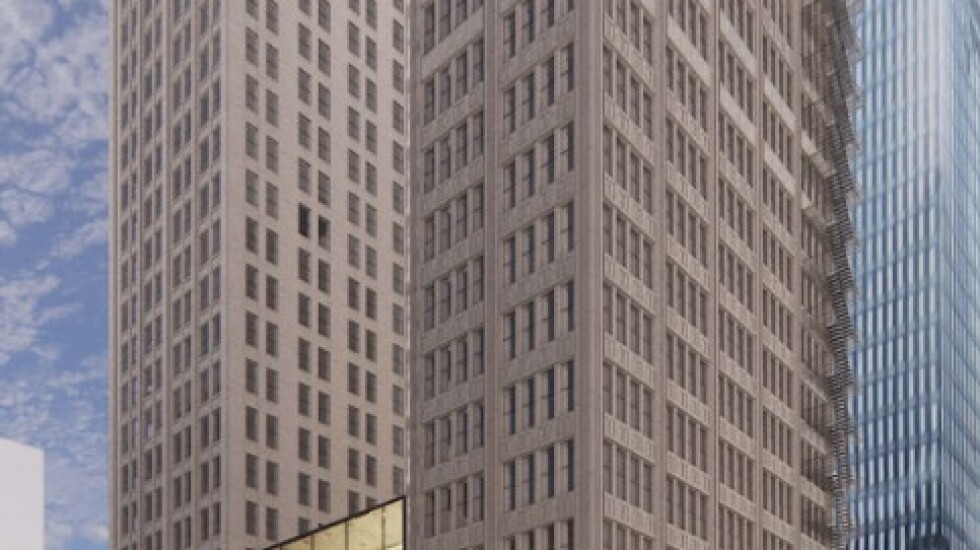
A coalition of organizations, uniting around what they call a “sustainable vision” to save two State Street skyscrapers from the wrecking ball, plans to propose on Wednesday that they be turned into an archives center for scholarly research.
Around 20 religious orders along with Dominican University in River Forest have expressed interest in taking space in the towers, built in the early 20th century, said Ward Miller, executive director of Preservation Chicago. He said nonreligious organizations, such as museums, also could join what’s being called the Chicago Collaborative Archive Center.
The federal government owns the vacant towers, in the 200 block of South State Street, and wants them demolished, saying they pose a security risk to the neighboring Dirksen Federal Building. Advocates for saving them argue that archival storage would minimize any security threat and allow windows facing the federal building to be sealed off.
“A collaborative archive of this proposed size is rare in the country,” said Christopher Allison, a historian and director of the McGreal Center at Dominican University. “It would become a major hub for archive-based research and would consolidate precious sources in one space.”
Miller said the various groups would form a tax-exempt nonprofit to manage its affairs and raise money, as well as apply for grants to get the project started. But he said costs for the redevelopment are unknown. The manager of federal property, the General Services Administration, handles the buildings.
“I think we would really engage the GSA to be our partner,” especially with maintaining the buildings’ terra cotta skin, Miller said. JLK Architects and the engineering firm Thornton Tomasetti have helped with the preservation plan.

The GSA in early May told the Sun-Times it “will engage with potential consulting parties and evaluate viable alternatives” for the buildings as part of a review required by the National Historic Preservation Act. The agency has emphasized the security concerns of federal court personnel. U.S. Sen. Dick Durbin, D-Ill., earmarked $52 million for the demolition and has insisted that the buildings, with some windows that look into judges’ chambers and jury rooms, must be removed.
But Miller and others argue an archives center, with limited staff and tightly controlled access, represents an ideal use for the situation. They said it’s a better alternative than demolition. Taking down the buildings would leave an empty stretch on State Street, which is on the National Register of Historic Places. The Chicago Loop Alliance, representing downtown businesses, also prefers saving the buildings.
Various Franciscan and Dominican orders are interested in archive space, Miller said. The project appeals to the orders because they could share costs for maintaining treasured archives. Miller said one interested organization, the Archives of the Episcopal Church, could account for most space in the largest of the two structures, the 22-story Consumers Building at 220 S. State St. It dates from 1913. The 16-story Century Building, at 202 S. State St., was built in 1915.
The preservation plan also calls for refurbishing two former retail storefronts between the towers, also federally owned. Miller said the in-between space could become a common entry, perhaps with a visitor center or small lecture hall.
“There is strength in a collaborative archive. The value of the individual collections within such a repository are increased by the presence of the others,” said Holly Fiedler, province archivist, Sisters of St. Francis, Sacred Heart Province. “There are certainly many challenges in making this vision a reality, but we are taking actionable steps forward to achieve the ultimate goal.”
Security concerns killed a plan from private investors in 2019 to convert the narrow buildings into small apartments. Many windows of the Consumers Building afford a view of the Dirksen center. The problem is less notable with the Century Building, whose walls closest to the federal building are windowless.







